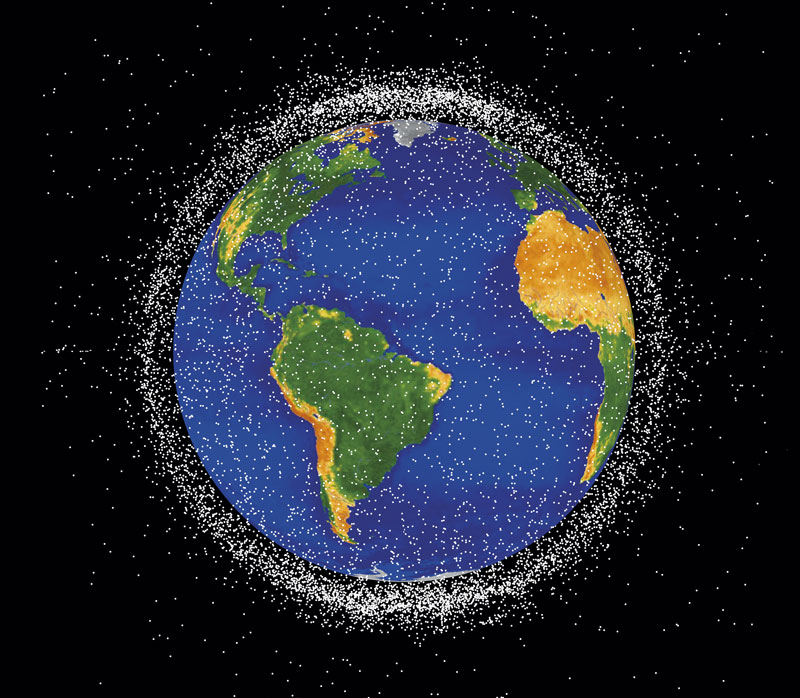
NASA ODPO
Image of the area with the highest concentration of satellite debrisNASA ODPOA team from the USA’s National Oceanic and Atmospheric Administration (NOAA) used a research plane equipped with a special funnel to collect suspended particles—known as aerosols—from the stratosphere, the second layer of the atmosphere, which extends up to 50 kilometers above the Earth’s surface. The objective was to find rock particles that burn when entering the atmosphere, but the plane found metal chemical elements that could not be explained by natural processes. High levels of niobium, hafnium, aluminum, copper, lithium, silver, iron, lead, magnesium, titanium, beryllium, chromium, nickel, and zinc were associated with the reentry of man-made satellites and rockets into the Earth’s atmosphere. When they return to Earth, these objects produce metal vapors that condense into aerosols. The study found that 10% of the sulfuric acid particles in the stratosphere with a diameter of 120 nanometers or more contained at least one of the 20 chemical elements generated by the reentry of satellites, given that the amounts found exceeded the levels seen in cosmic dust. The situation—the consequences of which remain uncertain—is likely to worsen, with 9,000 low Earth orbit satellites currently in operation and another 50,000 potentially launched by 2030 (PNAS, October 16).
Republish